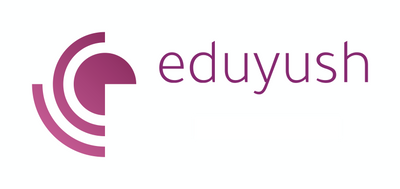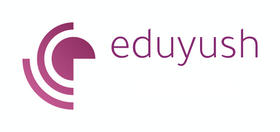A Full Guide to the Meaning and Benefits of Full Forms
Full Form
The full form is a term used to refer to the complete name of a particular abbreviation or acronym. It is a shortened version of the original phrase or name and is used to make communication more efficient.
It is a great tool to use in many different settings because it can help to make things easier to understand, faster to communicate, and more efficient overall. However, some potential drawbacks to using a full form should be considered before deciding whether or not to use it.
In this article, we will discuss the definition of full form, its benefits, commonly used full forms, potential drawbacks, strategies to avoid potential drawbacks, tips to make the most of full form, how to use the full form to your advantage, famous full form examples, and different ways to use the full form.
What is the Full Form?
The full form is a shortened version of the original phrase or name and is used to make communication more efficient. It can be used in various ways, including emails, messages, websites, and other documents.
The full form of an abbreviation or acronym can help make communication easier to understand and save time. For example, if someone is sending an email to a group of people, they could use the full form of acronyms and abbreviations instead of writing out the whole phrase. This will help to save time and make communication much more efficient.
What are the Benefits of Using Full Form?
There are several benefits to using full forms:
- Improved understanding: Full forms can help improve understanding by providing more context and detail about the meaning of a word or phrase. This is particularly helpful when an acronym or initialism is unfamiliar or may be interpreted differently by different people.
- Clarity: Full forms can help make written communication clearer and more precise. They can help eliminate confusion or misunderstandings when acronyms or initialisms are used.
- Consistency: Using full forms consistently can help ensure that everyone is on the same page and that there is no confusion about the meaning of words or phrases. This is particularly important in professional or technical contexts where precise language is essential.
- Professionalism: In some cases, using full forms may be seen as more professional or formal. For example, full forms may be preferred over acronyms or initialisms in academic or legal writing.
Overall, using full forms can help improve the clarity and effectiveness of written communication, particularly in professional or technical contexts.
Commonly Used Full Forms
Many commonly used full forms are used in many different settings. Some of the most popular full forms are “LOL” for “Laugh Out Loud”, “FTW” for “For The Win”, “BTW” for “By The Way”, “OMG” for “Oh My God”, and “TTYL” for “Talk To You Later”.
Additionally, there are many different full forms used in different industries. For example, in companies, a typical full form is “CEO” for “Chief Executive officer”. In the technology field, a typical full form is “API” for “Application Programming Interface”.
Potential Drawbacks of Using Full Form
There are a few potential drawbacks to using full forms:
- Length: Using full forms can make text longer and potentially more challenging to read, primarily if the full forms are used repeatedly. This can be particularly problematic in cases where space is limited, such as in headlines or social media posts.
- Familiarity: In some cases, people may be more familiar with acronyms or initialisms than with the full forms of words or phrases. In these cases, using full forms may be confusing or require additional explanation.
- Formality: Using full forms may be seen as more formal or less colloquial, which may not be appropriate in specific contexts. For example, using full forms in casual conversations or social media posts may sound stilted or unnatural.
- Repetition: Using full forms repeatedly can be repetitive and make the text less engaging or interesting to read.
Overall, it is important to consider the context and audience when deciding whether to use full forms. In some cases, using acronyms or initialisms may be more appropriate, while in other cases, using full forms may be more effective.
Tips to Make the Most of Full Form
Here are a few tips for making the most of full forms:
- Use full forms sparingly: Use full forms only when necessary for clarity or precision. Overusing full forms can make text longer and more challenging to read.
- Consider your audience: Consider who your audience is and whether they are likely to be familiar with the acronyms or initialisms you use. If your audience is unfamiliar with the terms, it may be helpful to use full forms to provide more context.
- Use full forms consistently: If you decide to use full forms, try to be consistent in your use of them. This will help ensure that your message is clear and that there is no confusion about the meaning of words or phrases.
- Consider the context: Think about the purpose of your communication and the tone you want to convey. In some cases, using full forms may be more appropriate, while in other cases, acronyms or initialisms may be more suitable.
- Use formatting to make full forms easier to read: Use headings, bullet points, or bold or italicized text to help your readers quickly find the information they are looking for.
By following these tips, you can effectively use full forms to improve the clarity and effectiveness of your communication.
Top 10 most used full forms in India
- IAS: Indian Administrative Service
- CTC: Cost to Company
- EMI: Equated monthly installment
- HR: Human Resources
- FAQ: Frequently Asked Questions
- GPS: Global Positioning System
- HTML: HyperText Markup Language
- HTTP: HyperText Transfer Protocol
- ISP: Internet Service Provider
- PDF: Portable Document Format
Here are the top 10 commonly used full forms in the United States:
- USA - United States of America
- FBI - Federal Bureau of Investigation
- NASA - National Aeronautics and Space Administration
- CIA - Central Intelligence Agency
- IRS - Internal Revenue Service
- FDA - Food and Drug Administration
- CDC - Centers for Disease Control and Prevention
- NYC - New York City
- NBA - National Basketball Association
- GPS - Global Positioning System
These are just a few examples of full forms. Many other acronyms and initialisms have full forms, depending on the context and subject matter. Let me know if you have any other questions!
How can I learn more about using full forms?
There are a few ways you can learn more about using full forms:
- Research online: Many online resources, such as dictionaries and style guides, can provide information about full forms. You can search for specific acronyms or initialisms to find their full forms.
- Ask a mentor or colleague: If you have a mentor or colleague who is experienced in using full forms, you can ask them for advice or guidance. They may be able to provide you with helpful tips or examples.
- Practice using full forms: One of the best ways to learn about them is to practice using them in your writing. Try incorporating full forms into your writing and see how it affects the clarity and effectiveness of your communication.
- Seek feedback: Ask someone to review your writing and provide feedback on using full forms. This can help you identify areas where you may need to improve and allow you to practice using full forms more effectively.
By following these tips, you can learn more about using full forms and improve your skills.
Conclusion
Full form is a great tool to use in many different settings because it can help to make things easier to understand, faster to communicate, and more efficient overall. However, it is important to use it correctly and appropriately to avoid potential drawbacks.
Additionally, it is important to be aware of the context of the conversation. If the conversation is informal, it is appropriate to use full form, but if the conversation is formal, it is essential to use formal language.
By understanding the definition of full form, its benefits, commonly used full forms, potential drawbacks, strategies to avoid potential drawbacks, tips to make the most of full form, how to use full form to your advantage, famous full form examples, and different ways to use full form, you can make sure to make the most of full form and use it correctly.
Read our blogs in various full forms.
Full form Questions? Answers.
A full form is the expansion of a shortened or abbreviated form of a word or phrase. It is the complete version of a word or phrase, written out in its entirety. Full forms are often used to help clarify the meaning of acronyms or initialisms, which are shortened forms of words or phrases that are pronounced as individual letters (e.g., FBI, which stands for Federal Bureau of Investigation). Full forms can also be used to provide more information about a word or phrase, or to distinguish between similar words or phrases that have different meanings. For example, the full form of "FAQ" is "Frequently Asked Questions," and the full form of "URL" is "Uniform Resource Locator."
Yes, you can use full forms in an office setting. In general, it is a good idea to use full forms when you are introducing a new acronym or initialism to your audience, or when the acronym or initialism may be unfamiliar or may be interpreted differently by different people.
However, it is also important to consider your audience and the context when deciding whether to use full forms or acronyms or initialisms, as using full forms too frequently can make text longer and more difficult to read.
There are no hard and fast rules for when to use full forms and when to use acronyms or initialisms. However, it is generally a good idea to use full forms when you are introducing a new acronym or initialism to your audience, or when the acronym or initialism may be unfamiliar or may be interpreted differently by different people.
The best way to use full forms on social media is to use them sparingly and to use acronyms or initialisms whenever possible, while also considering your audience and using formatting to make the full forms easier to read.
Using full forms can improve your writing by providing more context and detail, making your text clearer and more precise, and helping to eliminate confusion or misunderstandings.
The benefits of using full forms in terms of clarity include providing more context and detail about the meaning of a word or phrase, helping to eliminate confusion or misunderstandings, and making written communication more precise.
One benefit of using full forms in terms of organization is that it can help ensure consistency in written communication by specifying the use of full forms for certain acronyms or initialisms. This can help avoid confusion or misunderstandings about the meaning of words or phrases.
Using full forms can improve productivity by saving time spent on reading and understanding abbreviations, and by reducing the risk of confusion or misunderstanding due to different people using different abbreviations.
We list down popular full forms with detailed explanations. Click on the link to read












Leave a comment